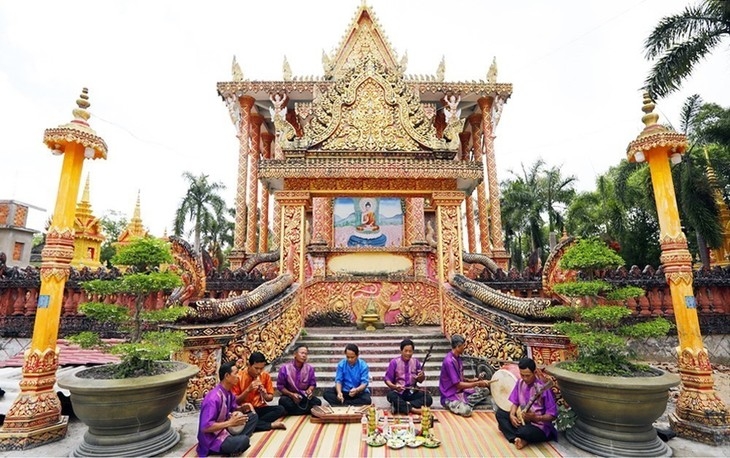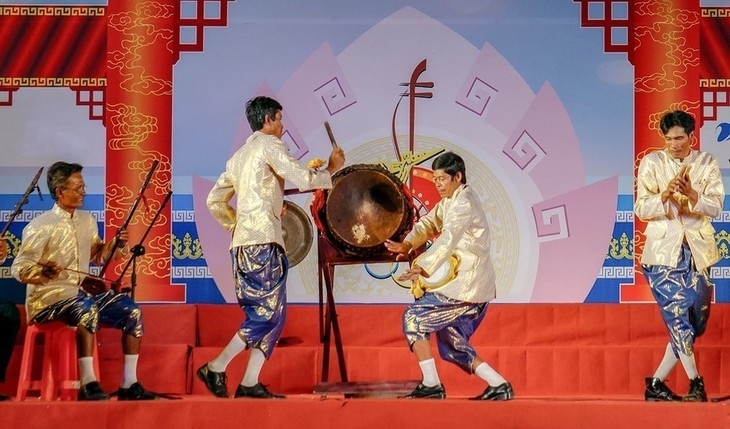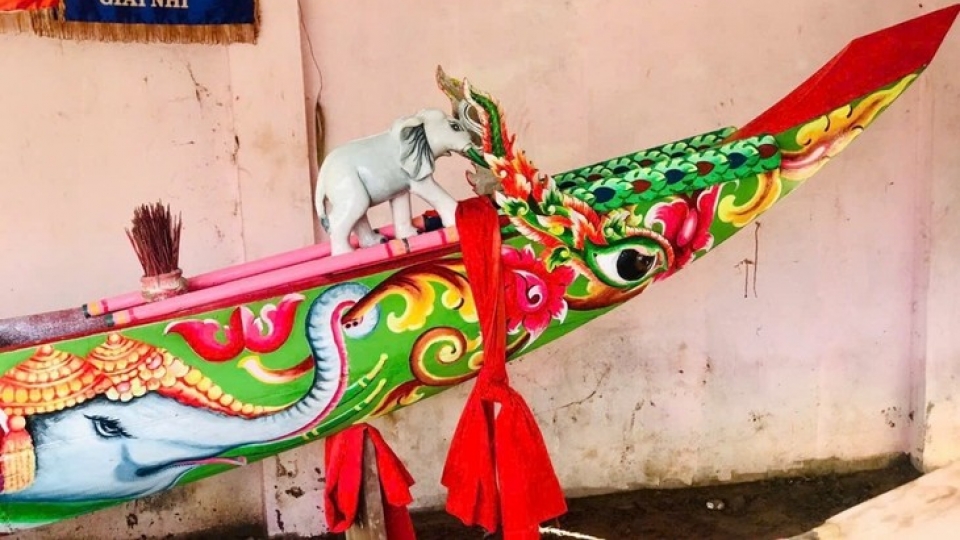When the big drum speaks, a heritage refuses to fade
VOV.VN - Big Drum Music of the Khmer ethnic people features an ensemble of 15 musical instruments, led by the large drum. In the Mekong Delta, only a few Khmer individuals still know how to play this lead instrument.

To preserve the tradition, elderly artisans are working to pass down their skills to younger generations, ensuring that the resonant sound of Big Drum Music continues to echo through Khmer villages.
The Khmer people in Ca Mau province tell a story that about a century ago, an artisan from Tra Vinh province (now part of Vinh Long province) migrated to Ca Mau and introduced Big Drum Music, which has been preserved to the present day.
Big Drum Music is performed at festivals and ceremonies such as weddings and funerals as a sacred medium for human beings to communicate with deities.
In 2022, this art form was recognized as a national intangible cultural heritage. It is now mostly practiced in Hamlet 7 of Tan Loc commune and Cay Kho hamlet of Ho Thi Ky commune, Ca Mau province.
“We play Big Drum Music at the Peace Praying Ceremony, Chol Chnam Thmay Festival, and Sene Dolta Festival. We beat the drums while dancing to the rhythm,” says artisan Huu Ban, head of the Hamlet 7 Big Drum Music Club.

Artisan Huu Ban notes that Big Drum Music now exists only in Ca Mau and Kien Giang provinces (now part of An Giang province). His club has performed at various festivals across the country and won numerous medals. However, most skilled performers are elderly. In his village, only about three people can still play proficiently. That is why they are making every effort to inspire and train the younger generation.
“At first, the young people only listen, then gradually join the ensemble. Whenever we have free time, such as on Sundays, we gather to practice and encourage the young people to take part,” says Ban.
Ban’s grandson, Huu Trong Nghia, is now a member of the Hamlet 7 Big Drum Music Club. Accompanying his grandfather and other elders to performances, Nghia feels the responsibility of the younger generation to preserve this cultural art.
“I’ve loved this music since I was little, watching my grandfather play. Now I try to learn more from him and then I can teach big drum skills to the kids in our village. I hope young people will keep this tradition alive,” Nghia remarks.
Although not born into a family with a drumming tradition, young artist Thach Lot from the Khmer Folk Art Troupe of Ca Mau province has felt in love with the sound of the big drum since coming to this land.
“There are very few people who know how to play, but they are trying to keep the flame burning. We do farm work every day, but whenever there’s a festival, we gather and play as much as we can to preserve it. I try to continue and teach the children,” says Lot.
Secretary of the Party cell of Hamlet 7 Huu Thoan holds that to promote the values of Big Drum Music, it’s important to support artisans train younger generations. “We need to open classes to train more young people. The younger generation follows their predecessors, that’s how we maintain our cultural heritage.”
For the Khmer people, the big drum is a sacred spiritual symbol as well as a treasured part of their cultural heritage. The dedication of Khmer artisans and local communities to preserving this art form reflects the richness and beauty of their traditional folk culture.



